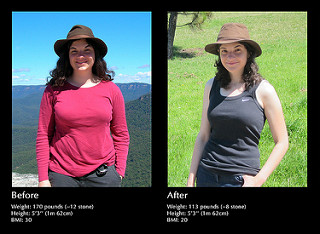Lose Weight > Common Sense To Lose Weight > Common Sense Article > How Does Stomach Stapling Help You To Lose Weight?
How Does Stomach Stapling Help You To Lose Weight?
Is it for you?
If you are only looking to lose weight in particular areas, you may try liposuction or a tummy tuck; a gastric bypass is for those 100 pounds overweight who have unsuccessfully tried to diet. Patients are usually between 15 and 65 and require understanding the psychological dangers involved in coping with what may be an entirely changed body figure. Obesity can be serious and this makes the gastric bypass a crucial surgery for several people, not just a cosmetic one.
No pain, no gain
Stomach stapling, although simple sounding is a complex surgery and you need to be organized for practical pain, major swelling and post operation hospitalization. Many of the nutrients that you take in with your food are not absorbed after stomach stapling; in the long run this may make you anemic. Later, it could put you at danger for osteoporosis and bone diseases. You may need to regularly take pills or dietary supplements. Many patients of gastric bypass need to remain particular diets through their lives. After your stomach stapling surgery, foods rich in sugar and fat are likely to make you feel uncomfortable.
Small and constant
Gastric bypass will change the way you consume pretty permanently. Instead of the few big meals that you may have been used to, after stomach stapling you'll find yourself requiring eating maybe eight or nine small meals a day. The surgically created pouch does not admit you to eat food and drink a liquid simultaneously: you will be able to do one or the other.
Things that may go wrong
There are additional dangers as well, one of which is the possibility that the pouch may stretch and expand to the original size of the stomach. The food pouch develops to twice its capacity in just two months and it's possible that it may stretch further. The stomach stapling may come apart, having the same effect: stomach enlargement to original size. If there are leakages, the acid content from the stomach may leak onto other organs, damaging them severely. Also, if the contents of the stomach move too quickly through the small intestine, you may find yourself reeling from nausea, perspiration, and diarrhea and so on. Patients occasionally produce gall stones and develop complications such as hernia which require further follow up operations; remember that corrective procedures come with their own dangers.
Chiseling away
After the extreme weight loss surgery, you may be 100-200 pounds lighter, but you'll still have skin sufficient for the big size that you once were. Gastric bypass normally needs to be followed by some kind of body contouring process for excess skin removal. This is an added cost that you may not have factored in when considering stomach stapling, but it's likely to crop up. The body contouring surgery also has a few dangers and requirements needed, so before choosing on the gastric bypass, you should probably consider the body contouring too.
The surgery requires a small band which is positioned around the upper part of the stomach, making a small pouch. The small size of the pouch means that you feel full sooner than before. The band can be adjusted in size by inflating or deflating the band which allows your doctor to correct the size of the gap between the pouch and the stomach. These procedures could be done by making a large incision in the stomach (an open procedure) or by laparoscopic instruments and a camera to guide the surgery.
Another alternative is stomach stapling, also called vertical banded gastroplasty, where an incision is made in the stomach. Surgical staples and a plastic band make a small pouch at the top of the stomach which is not completely closed off from the rest of the stomach.
Related Articles
-
Increased Fat Loss from Workouts
Would you like increased fat loss from your workouts? Im sure that
-
The Cure For Post Holiday Cravings
With the start of 2006, it is finally time to begin your diet. But aft
-
How to Lose Weight in a Few Days: Caffeine as a Weight Loss Aid
Many people believe caffeine to be an excellent way of losing weight.
-
The Best exercises for weight loss
The best calorie-burning exercises Before I give you the best exerc
-
5 Tips You Can Implement Today to Help You Lose Fat Quickly
One of the main reasons folks fail to lose weight when on a diet is
-
BMI Calculator
To estimate your BMI, enter your height and weight below, then
- DON'T MISS
- Fat Burning Cardio Workout Myth Part 2
- Some Useful Things To Avoid In Cutting Down On Weight
- Tips in Making Your Own Healthy Weight Loss Plan
- Weight Loss Programs- The Fact And Fictions About It
- What is Hoodia?
- What are the best weight loss supplements?
- Burning Fat Made Simple
- Natural Progesterone And Osteoporosis Treatment Success
- Wrinkles, Aging, Exercise, Running & Weight Loss …
- Tummy Tuck Cosmetic Surgery




